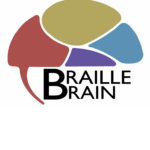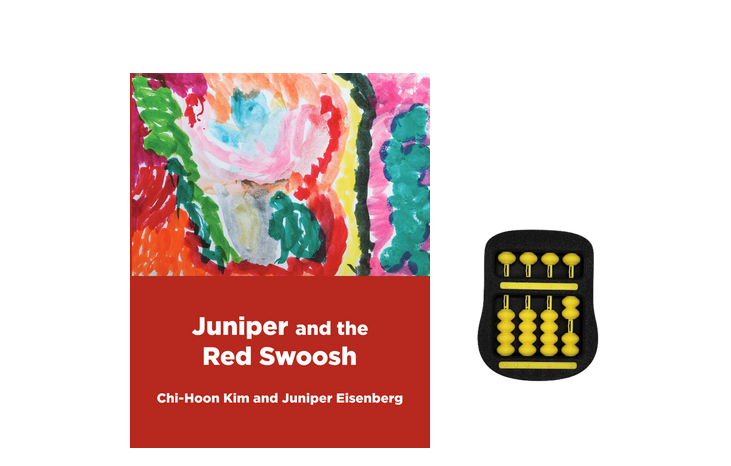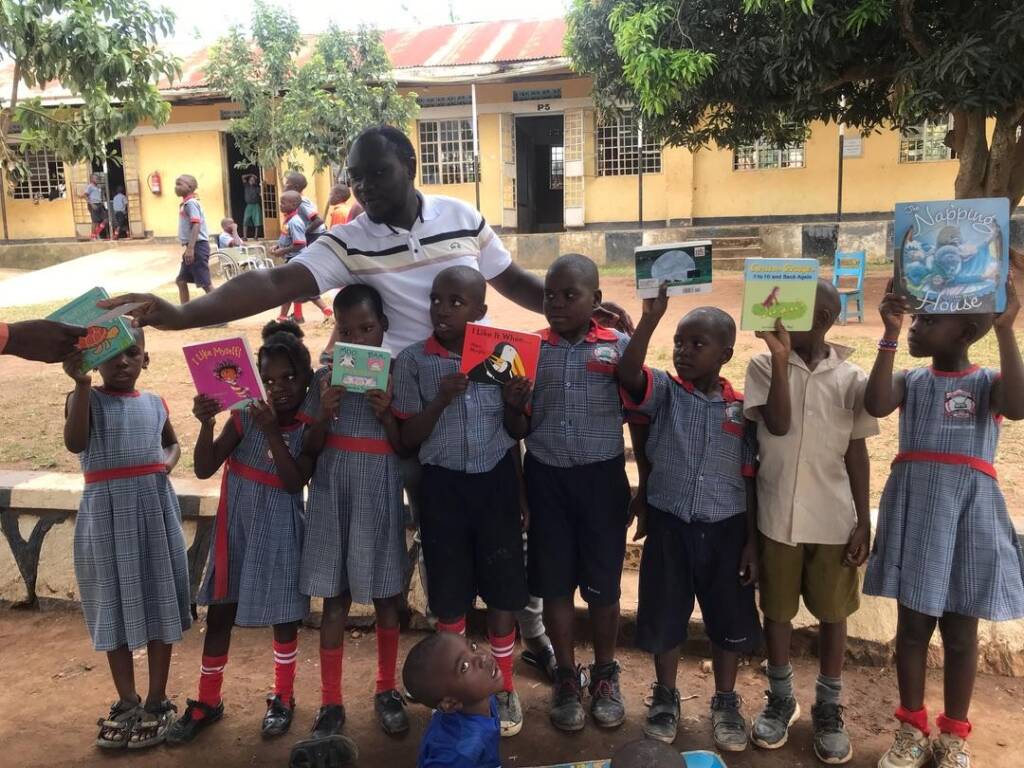Results from the ABC Braille Study showed that spelling is a strength for children who read braille. However, they struggle with vocabulary as they advance through the grades. This could be due to the higher expectations of students in vocabulary as they increase in grade level.
The Common Core State Standards (CCSS) for Vocabulary Acquisition and Use requires students to understand and use general academic (e.g. words seen in typical academic contexts like “evaluate,” “analyze,” “compare”) and domain specific words (e.g. words specific to a subject like geography, biology, history) and phrases (Kendall, 2011). Students are expected to demonstrate their knowledge and ability to use words in context, and understand meanings of word parts (i.e. affixes) reference materials, figurative language, word relationships and nuances in words. The table below provides a detailed look at the CCSS for Language: Vocabulary Acquisition and Use.
| Standard Number |
Standard Description |
|
4. |
Determine or clarify the meaning of unknown and multiple-meaning words and phrases by using context clues, analyzing meaningful word parts, and consulting general and specialized reference materials, as appropriate. |
|
5. | Demonstrate understanding of figurative language, word relationships, and nuances in word meanings. |
|
6. |
Acquire and use accurately a range of general academic and domain-specific words and phrases sufficient for reading, writing, speaking and listening at the college and career readiness level; demonstrate independence in gathering vocabulary knowledge when considering a word or phrase important to comprehension or expression. |
View the complete CCSS Language Standards.
Vocabulary acquisition is strongly linked to children’s reading comprehension (Adams, 2011; Rupley & Nichols, 2005). This is because there are more words found in written text than in everyday spoken language. To acquire reading comprehension children must understand 95% or more of the words read in text (Adams, 2011).
True vocabulary acquisition development requires more than the ability to define a word or derive basic meanings of words from context. According to Rupley, Logan, and Nichols (1998), vocabulary acquisition requires the ability to discuss, elaborate, and use multiple context or technical connotations to demonstrate a clear understanding of word meanings. For students who are visually impaired, this skill is challenging.
Vocabulary Acquisition and Use: Impact for Students who Read Braille
Children learn vocabulary both incidentally (seeing objects and actions in the environment and observing the behaviors of others) and through direct instruction (teachers explicitly teaching vocabulary terms), (Kamei-Hannan & Ricci, in press). However, children who have a significant visual impairment cannot acquire words through incidental learning. Therefore, for these children to have the foundation necessary to comprehend what is read in text, crucial concepts (e.g. directionality, figurative language, and concepts relating to the environment) must be explicitly taught. Many vocabulary terms require visual references to provide context. Therefore, to fully grasp vocabulary concepts vocabulary instruction for children who use braille should include meaningful experiences and the use of realia (real objects) when possible. Children who are blind need to make greater use of their other senses (touch, hearing, taste, and smell) to learn about the world around them. Therefore, it is important that they are provided with experiences that foster the development of their other senses (Wormsley & D’Andrea, 1997).
Characteristics of Proficient Readers of Vocabulary Acquisition and Use
Proficient readers in the area of Vocabulary Acquisition and Use have a wide vocabulary base and are strongly motivated to acquire and learn new words. They possess the ability to use information such as context to construct meaning as they read (Rupley & Nichols, 2005). The proficient reader understands how to use both print and electronic reference materials (e.g. dictionaries, glossaries, and thesaurus) to gather in depth knowledge of unfamiliar words. Proficient readers of Vocabulary Acquisition and Use understand figurative language and can demonstrate their knowledge of figurative language when reading, writing and speaking.
Characteristics of Struggling Readers of Vocabulary Acquisition and Use
Struggling readers of Vocabulary acquisition have limited words in their reading vocabulary repertoire and typically do not see progressions in their reading comprehension. Reading academic text is challenging for these struggling readers. They have difficulty making connections between words and lack a desire to learn new words. Students who struggle with vocabulary acquisition encounter numerous words in text for which they are not able to derive meaning. As a result they experience a breakdown in their ability to comprehend text (Rupley & Nichols, 2005). They don’t use or know how to use reference materials to acquire knowledge of unfamiliar words.
Resources
Adams, M. J. (2011). Advancing our students’ language and literacy: The challenge of complex texts. American Educator, 34(4), 3-11.
Collins Online Dictionary http://www.collinsdictionary.com/
Improving Reading Inventions, Strategies, and Resources. Kendall/Hunt Publishing
Kamei-Hannan, C. & Ricci, L. A., (2015). Reading Connections: Strategies for Teaching Students with Visual Impairments. Louisville, KY: American Printing House for the Blind.
Rupley, W. H., Logan, J. W., & Nichols, W. D. (1998). Vocabulary instruction in a balanced reading program. Reading Teacher, 52(4), 336.
Rupley, W. H., & Nichols, W. (2005). Vocabulary Instruction for the Struggling Reader. Reading & Writing Quarterly, 21(3), 239-260. doi:10.1080/10573560590949368
Wormsley, D., & D’Andrea, F. M. (1997). Instructional strategies for braille literacy. New York, NY: AFB Press.
This project was funded by the US Department of Education, Rehabilitation Services Administration (RSA), 84.235E Special Projects and Demonstrations for Providing Vocational Rehabilitation Services to Individuals with Severe Disabilities. The project is titled: Braille Brain: A Braille Training Program for pre/in-service Teachers of Students with Visual Impairments (TSVI), paraprofessionals, and other educational team members (H235E190002).

Braille Brain
Reading
- READING: Foundational Skills for Reading
- Integration of Knowledge and Ideas
- Vocabulary Acquisition and Use
- Braille Hand Movement and Refreshable Braille Displays
- Conventions of Standard English: Standard One
- Conventions of Standard English: Standard Two
- Writing and Language
- Craft and Structure
- Key Ideas and Details
- Best Practices for Teaching Braille and STEM to the Visually Impaired
- Assistive Technology to Support STEM Subjects for the Visually Impaired
- Compensatory Skills: A Focus on Organization
- Foundational Skills for STEM
- Math Instruction for Students with Visual Impairments
- Science Instruction for Students with Visual Impairments
- Tactile Graphics
STEM
- Best Practices for Teaching Braille and STEM to the Visually Impaired
- Assistive Technology to Support STEM Subjects for the Visually Impaired
- Compensatory Skills: A Focus on Organization
- Foundational Skills for STEM
- Math Instruction for Students with Visual Impairments
- Science Instruction for Students with Visual Impairments
- Tactile Graphics
- Braille Brain
- About Braille Brain
- Braille Training Program
- Foundational Skills for Reading
- Integration of Knowledge and Ideas
- Vocabulary Acquisition and Use
- Braille Hand Movement and Refreshable Braille Displays
- Conventions of Standard English: Standard One
- Conventions of Standard English: Standard Two
- Writing and Language
- Craft and Structure
- Key Ideas and Details
- Best Practices for Teaching Braille and STEM to the Visually Impaired
- Assistive Technology to Support STEM Subjects for the Visually Impaired
- Compensatory Skills: A Focus on Organization
- Foundational Skills for STEM
- Math Instruction for Students with Visual Impairments
- Science Instruction for Students with Visual Impairments
- Tactile Graphics



